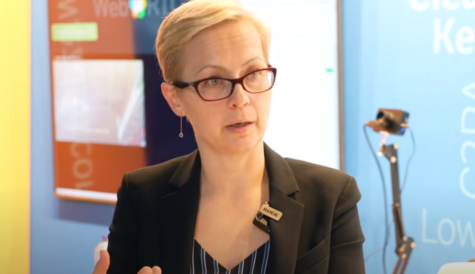
After more than 40 years of operation, DTVE is closing its doors and our website will no longer be updated daily. Thank you for all of your support.
No need to go it alone – why managed OTT is the smart way for operators to achieve profitability

The industry is in the midst of an exciting transition that is capitalising on ever improving technology to provide end-users with a greater amount of choice and flexibility than ever before.
The shift towards OTT and the emergence of on-demand viewing has revolutionised how people consume content, and operators must change their approach in order to maximise profitability in this new age.
This is not a trend that is going to slow down, as new generations of viewers grow up in households where streaming is the default. A recent report from the Consumer Tech Association (CTA) found that 71% of US households use at least one paid streaming service while only 58% subscribe to a traditional pay TV service.
The first step for operators to adapt is to recognise the preferences of their users, says Kim Ferar, Director of Product Marketing, Verizon Media: “Operators need their content to be accessible everywhere their audience is regardless if it’s consumed via traditional TV or OTT methods.”
However, this doesn’t necessarily mean reinventing the wheel in the way that AT&T’s WarnerMedia and Comcast’s NBCUniversal have arguably done with their respective launches of HBO Max and Peacock earlier this year.
Instead, Ferar argues that existing players must make the most of the infrastructure that is already in place while introducing new practices – evaluating the wants and needs of both the operator and the viewer. “Broadcasters’ legacy workflows won’t be changing anytime soon so they need to find partners that can take their video feeds and repurpose it by transforming the content into a format that can be streamed,” says Ferar. “Because OTT is personal – i.e. 1 to 1 device – broadcasters can generate more revenue by inserting ads and taking advantage of the granular targeting and data collection that doesn’t exist in traditional TV to drive up content value.”
The introduction of new practices like dynamic ad insertion and content recommendations are not just for the benefit of the platform operator though. Users have come to expect that OTT presents a far more tailored experience that also meets or exceeds the video fidelity of what has been provided by pay TV operators.
Ferar says that viewers demand experiences that are “more personalised, engaging, and innovative than traditional TV.”
Launching an OTT platform however is a daunting and expensive task – WarnerMedia invested a reported US$500 million in the development of the HBO Max platform alone, and that does not even take into consideration the millions spent on content over the company’s history. Operators also require a fast turnaround, with time being of the essence in this fast-paced market.
With all of this in mind, operators are increasingly turning to third-party experts like Verizon Media who can reduce overheads and deployment time, streamline workflows and importantly limit the number of required vendors.
“Verizon Media streamlines and optimises workflows while mimicking all the bells and whistles that TV offers and that broadcasters are accustomed to, including linear channels, blackout restrictions and time-shifting content based on a viewer’s geography.” says Ferar.
OTT providers offering managed services can, Ferar continues, “expedite time-to-market and support one-off event spikes. They are a cost-effective tool that helps meet viewer demand and enables you to ladder up resources as needed.”
“Verizon Media provides broadcasters the ability to deliver the same TV-like quality with the scale and footprint to personalise streams for massive global audiences. All that’s required of viewers is to have an internet connection.”
Post-launch profitability
While reducing the initial costs is important, perhaps more vital in a long-term sense is ensuring that an OTT platform can go on to become profitable in as short a time as possible.
For platforms that integrate advertising – AVODs – there are a number of programmatic solutions that have the potential to provide greater profitability than even traditional TV.
One solution provided by Verizon Media is Prebid. This is a new technology that disrupts the traditional buying and selling of OTT ads for maximum profitability.
Ferar explains: “Prebid is an innovative programmatic technology that uses an open source framework to conduct simultaneous auctions in real-time to compete with other ad buys. It’s an easy, low-risk solution that integrates with your server-side ad insertion vendor and has huge potential to improve ad yield.”
This, combined with working alongside a managed services provider, can help operators combine viewer demand with partners that provide industry expertise and a framework that can easily be scaled.
There is no doubt that OTT will be the future of the industry and that it is an exciting time to be operating in the space. Broadcasters and traditional operators however must be smart in how they adapt in order to create a future-proof solution that can be profitable.
The good news for operators is that they don’t have to go it alone. There are a wide range of vendors like Verizon Media who can reduce costs and time to market while also helping to manage growth and create a platform beloved by its users.
This is sponsored content. To learn more about how Verizon Media’s technology is delivering more personalized, engaging, and innovative viewer experiences, click here.



